Odysseus and Aeneas
Guest Article
By Anthony Adolph
Christopher Nolan’s new film of Homer’s epic poem The Odyssey will sweep us back to the story of Odysseus striving to return home after the Trojan War. But when I watch it, I will be thinking as much of that other epic seafarer, Aeneas, the mythological founder of Rome and great grandfather of Britain’s own seafaring founder, Brutus of Troy.
Odysseus and Aeneas had much in common, starting with their mutual background in the Bronze Age eastern Mediterranean. Odysseus was from Ithaka (yes, Ithaka, none of this nonsense about Kephalonia or Lefkada, thank you), on the western side of Mycenaean Greece and Aeneas was the nephew of Priam, King of Troy, which lay east across the Aegean from Greece. Pseudo-Xenophon’s treatise Cynegeticus alleges that they had the same teacher, the centaur Cheiron, though not at the same time, and the addition of Aeneas to the list was probably an afterthought. Our main information on Aeneas is from Homer’s Iliad, which appears to be based in genuine oral tradition dating back to the Trojan War. The poem describes the quarrel of Achilles and Agamemnon during the war between Greece and Troy and, within this, we hear how both Odysseus and Aeneas were drawn into the conflict and of their acts during it. They were often on the battlefield at the same time, but never directly engaged each other, either with word or arms.
A much later source, the Chronicle of the Trojan War by Dictys Cretensis, relates on the other hand that when the Greeks arrived at Troy, Odysseus was one of the ambassadors sent to the city to demand the return of Helen. Much discussion ensues, at the end of which Aeneas states ‘Up to now, we have merely been bandying words. But now, unless you and your fleet leave our land, you will taste Trojan valour and courage…’, to which Odysseus retorts that it was the Trojans who started the conflict by abducting Helen, and they were welcome to start the fighting now if they wished. Later, however, when the war was going very much in the Greeks’ favour, Dictys describes Aeneas and other Trojans actively plotting Odysseus and Diomedes to overthrow Priam, return Helen and end the war before the city was ruined. But Dictys’ account is heavily biased against the Trojans, and we simply do not know how much of it, if any, is based on any genuine oral tradition.
In the end, as we hear in Homer’s Odyssey, it was Odysseus’s idea to hide himself and other Greek soldiers inside the Trojan Horse, thus winning the war for the Greeks. In Virgil’s Aeneid, we hear that, of all the Trojans, Aeneas was one of the few with the wit to realise the Horse was a ruse, but he was overruled and ignored.
Virgil wrote his Aeneid in Roman Italy well over half a millennium after Homer. By then, Rome had developed an origin myth (that had not existed in Homer’s time) that it owed its foundation to Aeneas. To reach Rome, Aeneas must have travelled either by land or sea. A journey on land would have been incredibly arduous, the sort of thing Hercules might have attempted, but there is never any suggestion that the Romans ever contemplated Aeneas travelling that way. From the start, the journey imagined for Aeneas was by sea, so the obvious literary predecessor on which to draw was The Odyssey. Thus, when Virgil set to work on his epic at the behest of Augustus (who claimed direct descent from Aeneas), he drew deeply on The Odyssey for details and inspiration.
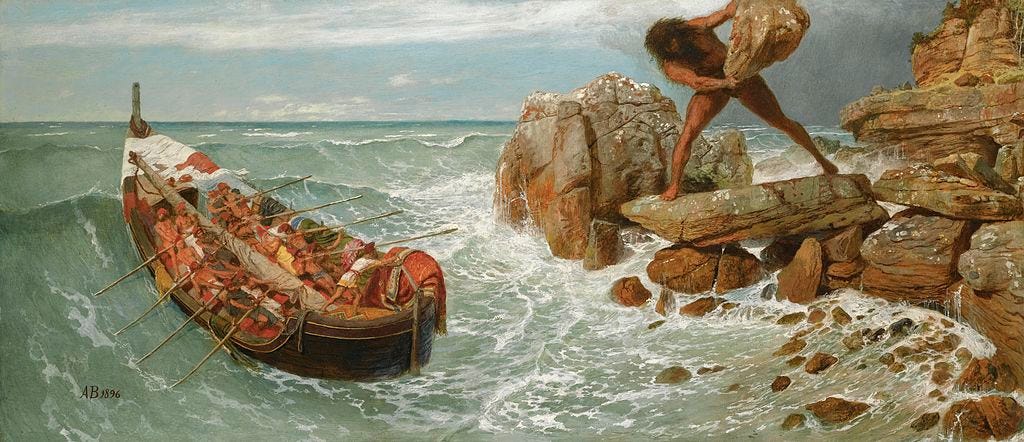
Another reason for modelling his story on The Odyssey was that, in the mythology surrounding the origins of Rome, Odysseus was there already. It looks from the scenes depicted on vases in Etruria, such as one from the 600s BC showing Odysseus blinding Polyphemus, and also from Dionysius of Halikarnassos’s Roman Antiquities, that the Greeks from the 700s BC onwards had started imagining that Odysseus’s journey bringing him to Italy and being somehow responsible for instilling civilization into the proto-Romans. The last paragraphs of Hesiod’s Theogony, probably added at about the 500s BC, make Latinus, the eponymous ancestor of the Latin race, into a son of Odysseus and Circe – the sorceress who delayed Odysseus’s journey for so long. The earliest mention of Aeneas reaching Italy is from Hellanikos of Lesvos (c. 490-c. 405 BC) who wrote ‘Aeneas came into Italy from the land of the Molossians [Epirus] after Odysseus and became the founder of the city, which he named after Rome, one of the Trojan women’. It was only later that Odysseus was dropped and Aeneas came to the fore as Rome’s progenitor – but Odysseus’s shadow never fully went away, and when Servius wrote his commentary on the Aeneid, he reported a story that Aeneas married Roma – and that she was Odysseus’s daughter.
The reasons why Rome chose Aeneas over Odysseus are complex, and discussed in full in my book In Search of Aeneas, but it came down to something very simple: Odysseus was Greek, and the Romans found the Greeks too clever, too sly, by half. But Aeneas, from noble Troy, gave them a cleaner mythological slate – and his mother was the goddess Aphrodite, who thus bestowed divine sanction on the Romans’ empire-building ambitions.
In Virgil’s Aeneid, Aeneas and Odysseus never meet, but again, Odysseus’s shadow is cast long. As Aeneas sails up the western coast of Greece, he has to go right past Ithaka, cursing ‘the region which fostered pitiless Odysseus’. As he sails along the southern coast of Italy, Aeneas passes Scylaceum (Squillace), whose mythological founder, it so happens, was Odysseus, and Virgil probably knew this when he called it ‘the home of shipwreck’, implying that anything Odyssean could spell danger for Aeneas.
What comes next, as Aeneas approached the Straits of Messina between Italy and Sicily, is explained best by a direct quote from my book, In Search of Aeneas (pp. 201-3):
Aeneas would have wanted to sail north, up the passage between Italy and Sicily, but both nature, and Homer, were against them, for the straits’ strong, south-flowing current makes this one of the few places in the Mediterranean where the tides tug strongly. This posed great dangers for Bronze Age ships, and there is wide agreement that the Straits of Mesina were the ones described in Homer’s Odyssey, where Odysseus tried to negotiate a safe course between the terrible whirlpool of Charybdis on one side, and a rock on the other, on which perched the Scylla, with six writhing necks and slavering dog-like heads. Circe had warned Odysseus about this, and, back in Buthrotum, Helenus had foreseen similar difficulties for Aeneas. Scilla’s rock is identified now as one on the western Italian coast, on which perches the Castello Ruffo di Scilla. In book 13 of Ovid’s Metamorphosis, Scilla was turned to stone after Odysseus had been there. By skirting next to her rock, says Ovid, and keeping well away from the whirlpool opposite, Aeneas’s fleet reached the Tyrrhenean Sea, only to be swept back down through the straits again by a storm. Virgil’s Aeneas, mindful of Helenus’ warnings, entered the straits between Scylla and Charybdis, but encountered terrifyingly turbulent seas. Later, in Aeneid 1, he recalled hearing the baying of Scylla’s hounds, but maybe this was just the roar of the waves. Quickly, the fleet altered its course, south-west, planning to avoid the perilous straits by sailing right around Sicily instead.
As Aeneas’s ships approached the Sicilian coast, the menacing bulk of Mount Etna would have loomed ever closer. The volcano is still alive and volatile today, puffing smoke and venting spurts of lava. We climbed part of it, an unforgiving struggle up its shifting, ashen slopes, as far as a refuge-café; the following year, we saw a newspaper report that this ‘refuge’ had been destroyed by a minor eruption. The Greeks reasoned that Etna’s volcanic activity was due to Typhon being imprisoned below it. This dreadful monster was sent by Kronos to punish Zeus for overthrowing him, but Typhon failed; Etna’s molten lava was believed to be his bile as he lay below, imprisoned for eternity. The Greeks also believed that Etna’s fiery depths contained the forge of lame Hephaestus, the Olympian consort of Aphrodite. Besides armour for the heroes, Hephaestus fashioned Zeus’s thunderbolts, assisted in his work by the Earth-born Cyclopses, each with a single eye in the centres of their hideous heads. When Odysseus landed below Etna, he and his men were trapped in the cave of the Cyclops Polyphemus. Cunning Odysseus plied the Cyclops with Maroneian wine, and blinded his single eye with a pointed stake. As Odysseus and his men fled back to their ship, the Cyclopses flung jagged rocks at them. These became the Isole Ciclopi, the huge rocky islands which pepper the shoreline at Aci Trezza.
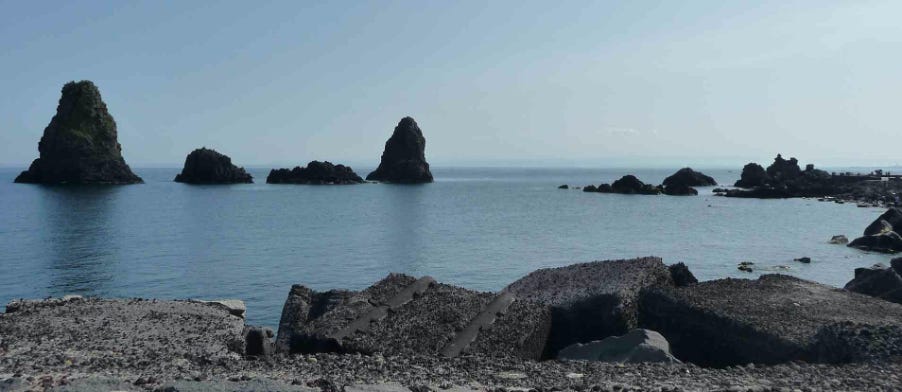
This was one of the landing places in the Allied invasion of Sicily in the Second World War; by uncanny coincidence, an old army map of Sicily, in my grandfather’s papers, had a single, pencil arrow pointing straight at Aci Trezza, and an Italian war memorial on the shore attests to fierce fighting here. It seems that my grandfather, who was a major in the Royal Artillery, made landfall in Sicily in the precise place where both Odysseus and Aeneas were said to have landed before him. Aeneas’s landing there allowed Virgil to create a perfect link between his Aeneid and Homer’s Odyssey, for on the shore, Aeneas encountered Achaemenides, one of Odysseus’s sailors who had been left behind in the rout, and who was now emaciated and half-deranged with fear.
Even as Achaemenides recounted his sorry tale, the Trojans saw monstrous Polyphemus himself, using an uprooted tree trunk as a blind-man’s cane, groping his way down the hillside to bathe his still-inflamed eye socket in the salty waves. In the Casa de Laocoonte in Pompeii was a painting, now lost but known from a drawing, showing a strapping, youthful Aeneas, naked below his cloak, with his men freshly landed from their high-prowed ship, gazing at coarse Polyphemus, with a ragged skin tied round his neck and leaning on a tree trunk, with his sheep flock around him; a fine metaphor, as Galinsky suggested, for civilisation encountering barbarism.
Terrified, the Trojans crept down to their ships, taking poor Achaemenides with them, and cast loose the ropes. But Polyphemus heard them and raised a blood-curdling cry that shook the waves and moaned through Etna’s caverns. The other Cyclopses appeared, ‘a conclave of fear’ as Aeneas described them. But, just in time, a brisk breeze filled the sails and sent the Trojans speeding safely away.
Later sections of the Aeneid reference the Odyssey too. Wishing to invoke his father’s shade (ghost) in Sicily, Aeneas performs a ceremony to summon the dead, modelled directly on Odysseus in book 11 of the Odyssey. In that scene, Odysseus speaks to his dead companion Elpenor, who bemoaned the fact that he had been left (in Circe’s realm) unburied, and Virgil used this as the model for his story of Aeneas encountering the shade of his dead helmsman Palinurus, who made a similar complaint. Sailing north from Gaeta (‘Caieta’s haven’) towards the mouth of the Tiber, Aeneas hears ‘the clamour of lions, boars, bears and wolves’: why? Because he had passed the realm of Circe (now called San Felice de Circeo), and Circe, as Odysseus had discovered to his horror, enjoyed transforming men into wild animals.
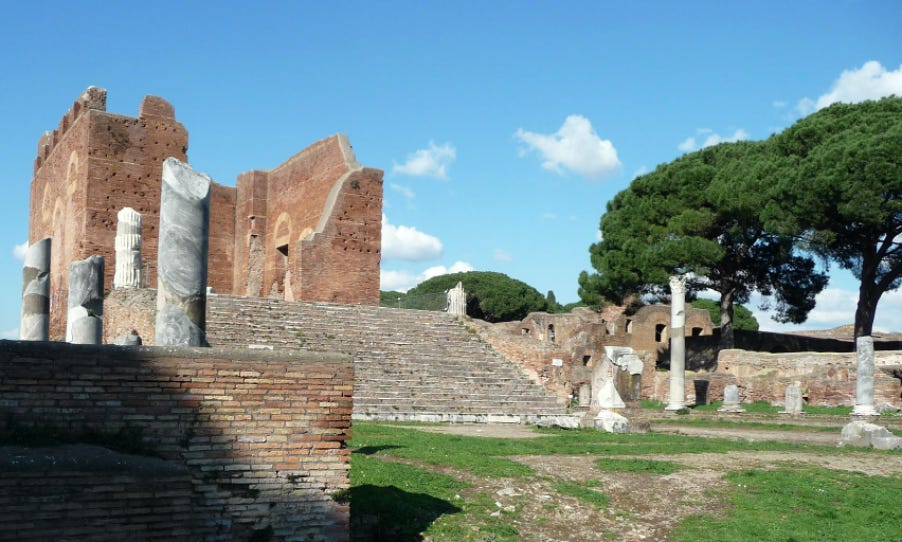
Aeneas then landed at the mouth of the Tiber, and from this stemmed the eventual colonization of that part of Italy by the Trojans, whose descendants were destined to be the Romans. In the AD 300s, the Origo Gentis Romanaei, a retelling of Aeneas’s story embellishing the Aeneid, imagines Aeneas on the shore, sacrificing to the gods in gratitude for his safe arrival on Italian soil, but being interrupted by the sudden appearance of Odysseus’s fleet on the horizon. Fearing that Odysseus would recognise and disturb him before the solemn sacrifice was complete, Aeneas drew a veil over his head, and from this stemmed the Latin practise of making sacrifices in capite velato, ‘with veiled head’. What a conversation might have ensured, had Odysseus come ashore and met Aeneas face to face – but alas, this never happened.
So, when you watch the movie of The Odyssey, spare a thought for Aeneas and his journey. Odysseus’s journey ended with his safe return to Ithaka, but within two generations, Mycenaean civilisation collapsed. Aeneas’s own odyssey led to the rise of Rome, and thence to the spread of Classical civilisation to Western Europe. It led, in mythological terms, so us.
P.S. My book In Search of Aeneas, Classical Myth or Bronze Age Hero? is published by Amberley (2023). Do buy and read a copy, as I am sure you will like it. But please also look out for Bernice Rubens and Oliver Taplin’s wonderful An Odyssey round Odysseus: the man & his story traced through time and place (BBC Books, 1989). This beautiful book was a real inspiration for many aspects of my work, and it will greatly enhances your enjoyment of The Odyssey.
Featured image: Aeneas flees burning Troy (1598). Galleria Borghese, Rome. (Public Domain)
Learn more about the epic hero, Aeneas, in Anthony Adolph’s latest research: In Search of Aeneas: Classical Myth or Bronze Age Hero?



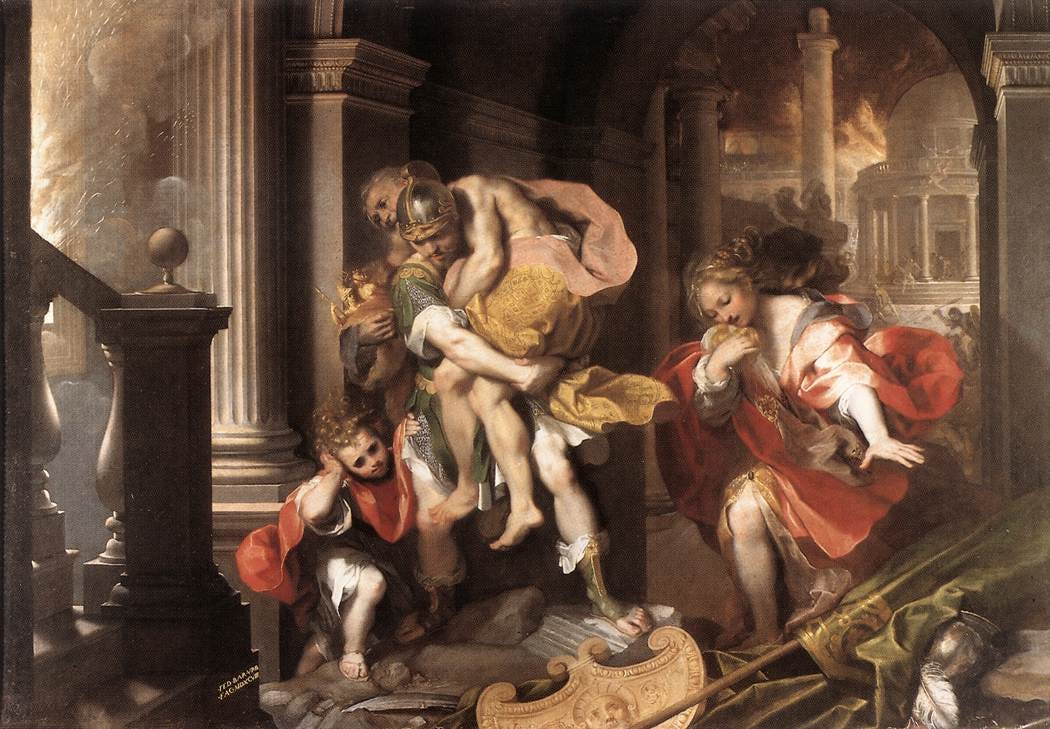
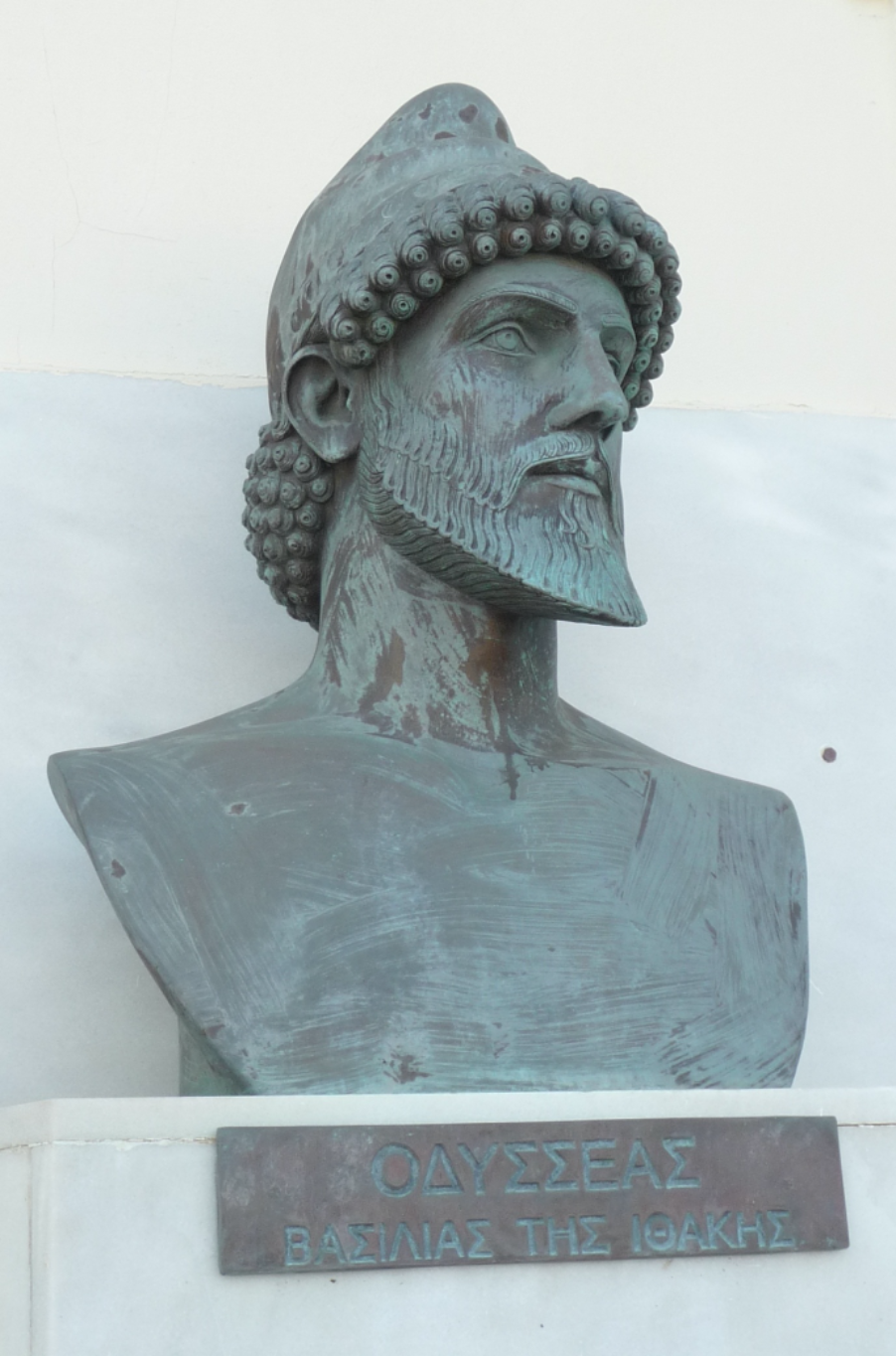
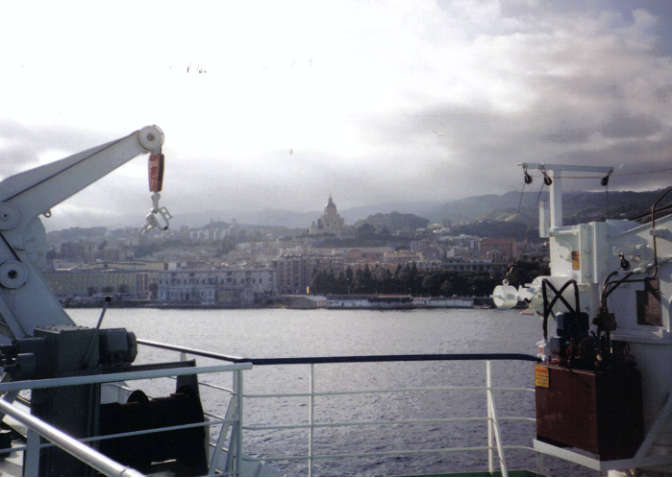
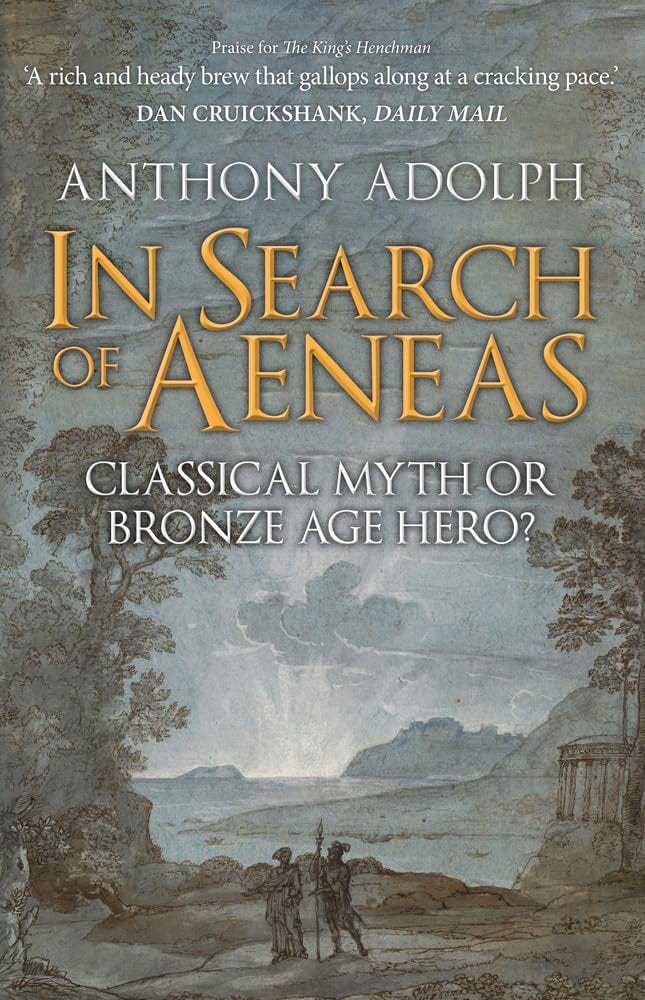
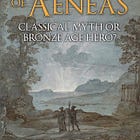
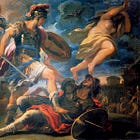
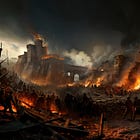
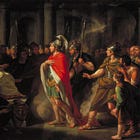
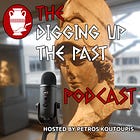

Thank you for such a positive response. The short answer is yes, the original Homeric Aeneas is probably based on oral tradition of a real king living in bronze Age Anatolia, who probably did claim to be the son of a goddess (as so many kings in that region did), and all the rest, his 'Odyssean' journey to Italy, can be shown to have been worked up out of nothing by first the Greeks and then the Romans themselves. The long answer is, as you anticipate, in my book, and it really is a fascinating story..... and I'd be delighted if you'd buy a copy.
Thank you for sharing this interesting and informative article.